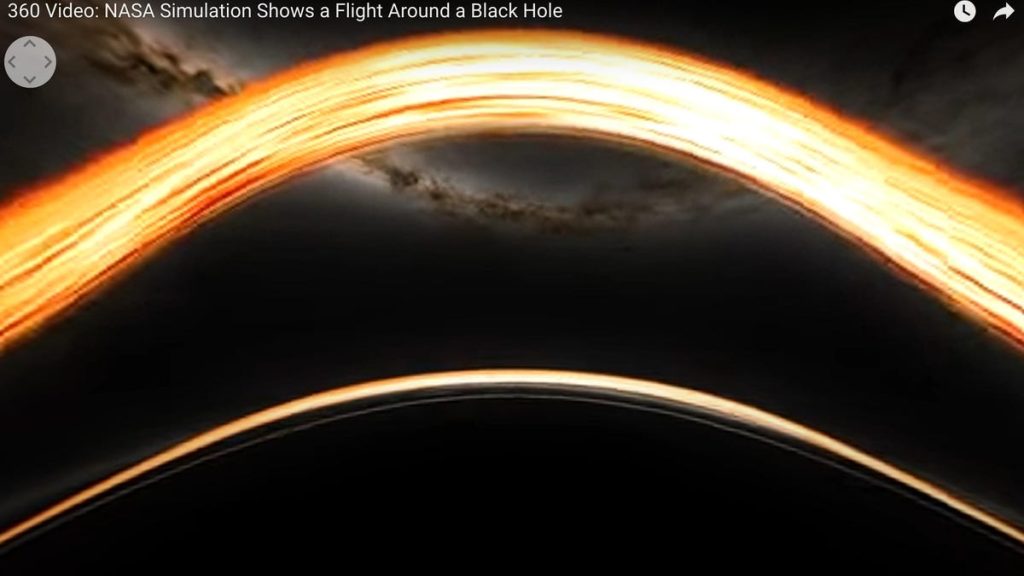Black holes are depicted in movies as mysterious places where gravity is so strong that not even light can escape. However, there is still much that humans do not understand about black holes. A new video from NASA attempts to show what it would look like when an object crosses the event horizon of a black hole. The simulation, created by Jeremy Schnittman and Brian Powell, provides a detailed visual of the experience as an object is pulled into the black hole. It includes explanations of each step of the process as well as technical details on how the simulation was created. The simulated black hole in the video is enormous, measuring about 16 million miles in diameter.
The simulation provides a glimpse into the experience of traveling into a black hole, showcasing the phenomenon of spaghettification when an object is stretched and distorted as it nears the singularity at the center of the black hole. The camera in the simulation experiences a rapid shrinking of the simulated sky before going dark as it hits the singularity, where the laws of physics cease to exist. Schnittman also created a second video showing the camera making orbits around the black hole before escaping safely. This 360-degree YouTube video allows viewers to see the trip from multiple angles. Schnittman recommends falling into a supermassive black hole, as smaller black holes can rip apart approaching objects before they reach the event horizon.
The simulation was created using NASA’s Discover supercomputer, which generated approximately 10 terabytes of data. This amount of data is equivalent to roughly half the estimated text content in the Library of Congress. The project took about five days to complete using just 0.3% of Discover’s 129,000 processors. Schnittman explains that the comprehensive simulation of a black hole is mostly for research purposes. By simulating these complex processes, he is able to connect the mathematics of relativity to the actual consequences in the universe. The simulation helps to illustrate the consequences of crossing the event horizon of a black hole, sealing the fate of any object that ventures too close.
Research on black holes is ongoing, as scientists strive to better understand these enigmatic cosmic phenomena. The simulation created by NASA provides a visual representation of what it might look like to cross the event horizon of a black hole, offering insights into the effects of extreme gravitational forces. By studying black holes and simulating their behavior, researchers can gain valuable insights into the nature of gravity and spacetime, furthering our understanding of the universe. The detailed visualizations produced by the simulation contribute to ongoing scientific research and exploration of these mysterious celestial objects.












